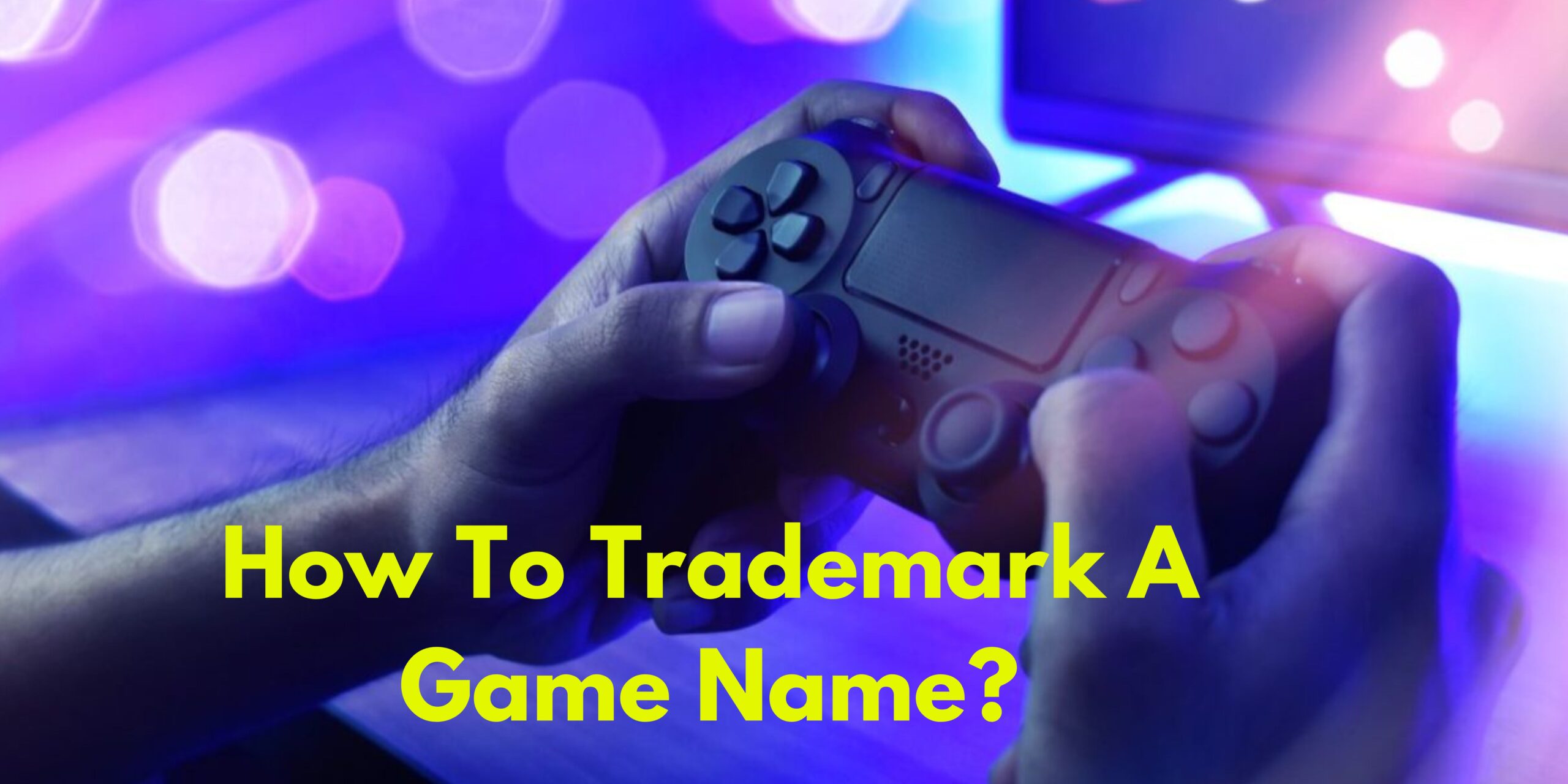How To Trademark A Game Name?

Table of Contents
In the competitive gaming industry, a unique game name is essential for brand identity and market success. Trademarking your game name is a crucial step to protect your intellectual property and ensure that it remains exclusively yours. Here’s to learning how to trademark a game name.
Why Trademark Your Game Name?
For a moment just suppose you’ve just developed an epic new game, and it’s called “BattleQuest.” Trademarking this name means you’re putting a legal shield around it. This way, no other game can snatch up a similar name and confuse your players. It’s like having a VIP pass that keeps your game’s name exclusively yours.
In the gaming world, where new titles are constantly there to stand out, your trademark ensures your game stays distinct. Think of “Fortnite” and its well-guarded name, it’s an essential step to keep your game from blending in with the crowd and losing its unique flavor.
Securing a trademark isn’t just about protection; it’s also about boosting your game’s reputation. It’s a solid asset that can increase your game’s value, especially if you’re looking to license it, bring in investors, or even sell your business. It’s a way to showcase that your game is not just another title—it’s a valuable brand.
A trademark also acts like a strong deterrent. When other developers see your game name is trademarked, they’re less likely to try to use something similar. This not only protects your brand but also maintains its special place in the market.
Taking the step to trademark your game name demonstrates a high level of professionalism. It shows you’re serious about your brand and committed to keeping it distinct. This can enhance your game’s credibility and make a positive impression on players and industry professionals.
Avoiding the hassle of rebranding is another perk. If someone tries to mimic your game’s name, your trademark ensures you won’t face the expensive and stressful task of changing your branding. Plus, as your game evolves—whether with new titles, expansions, or merchandise—your trademark will keep your brand protected across all these ventures.
Famous Trademarked Games
Monopoly
Monopoly is one of the most popular and enduring board games in history. Trademarking the name and related elements has allowed Hasbro to protect the game’s unique identity and prevent unauthorized copies. This protection extends to various special editions, video game adaptations, and themed merchandise, ensuring Monopoly remains a dominant force in the gaming market.
Pokémon
Pokémon is a global phenomenon, with a massive fan base and extensive merchandise. Trademark protection has been essential for maintaining the franchise’s brand identity and ensuring that all related products are authentic. The trademark has enabled The Pokémon Company to expand the franchise into various media and markets while preventing counterfeit products and unauthorized use.
The Legend of Zelda
The Legend of Zelda is one of Nintendo’s most beloved and critically acclaimed franchises. Trademarking the name and related elements has allowed Nintendo to protect its intellectual property and ensure that only official products bear the Zelda name. This protection has facilitated the development of numerous sequels, merchandise, and even a potential TV adaptation, all while maintaining the franchise’s integrity.
Minecraft
Minecraft has become a cultural icon, known for its creativity and educational potential. Trademark protection has enabled Mojang Studios and Microsoft to safeguard the game’s unique identity and ensure that all official products and adaptations are authorized. This has helped prevent unauthorized versions and maintain the game’s reputation as a leading creative platform.
Scrabble
Scrabble is a classic word game that has been enjoyed by generations of players. Trademarking the name and design elements has allowed Hasbro and Mattel to protect the game from imitators and ensure that all official versions are authentic. This protection has supported the game’s continued popularity and expansion into digital formats and merchandise.
Call of Duty
Call of Duty is one of the best-selling video game franchises of all time. Trademark protection has enabled Activision to safeguard its intellectual property and ensure that all related products, from games to merchandise, are official. This protection has been crucial for maintaining the franchise’s reputation and preventing counterfeit products.
Candy Crush
Candy Crush is one of the most popular mobile games ever created. Trademarking the name and related elements has allowed King to protect its brand and prevent copycat games from diluting its market presence. This protection has also facilitated the development of various spin-off games and merchandise, contributing to the franchise’s long-term success.
Fortnite
Fortnite has become a cultural sensation, known for its innovative gameplay and frequent updates. Trademark protection has enabled Epic Games to secure its brand and ensure that all related products and merchandise are official. This protection has helped prevent unauthorized use of the game’s name and characters, maintaining Fortnite’s reputation and market dominance.
Angry Birds
Angry Birds is a globally recognized game that has expanded into various media, including movies and merchandise. Trademarking the name and characters has allowed Rovio to protect its brand and ensure that all related products are authentic. This protection has supported the game’s expansion into new markets and maintained its popularity.
How to Trademark a Game Name
Trademarking a game name involves several steps. Each step is crucial to ensure that your application is successful and that your game name is adequately protected.
Step 1: Decide How to File
Before starting the trademarking process, decide how you want to file your application. You have three main options:
- Direct Filing with USPTO
- File directly with the United States Patent and Trademark Office (USPTO). This option is the most cost-effective but requires you to handle all aspects of the application yourself.
- Online Legal Services
- Use online legal services that specialize in trademark registrations. These websites can simplify the process and ensure that your application is correctly filed.
- Hiring a Trademark Attorney
- Hire a trademark attorney to handle the process for you. This option is the most expensive but provides expert guidance and increases the likelihood of a successful application.
Step 2: Review the Current Fee Schedule
The USPTO updates its fee schedule periodically. Before submitting your application, review the current fees to understand the costs involved. Being aware of the fees upfront helps you budget for the trademarking process and avoid surprises.
Step 3: Conduct a Thorough Search
Conduct a search in the USPTO’s Trademark Electronic Search System (TESS) to ensure that no similar trademarks are already registered. This step is crucial to avoid potential legal issues and application rejection.
Tips for a Comprehensive Search:
- Search Variations: Look for different variations of your game name, including common misspellings and similar sounding names.
- Related Classes: Check for similar names in related classes of goods or services.
- Review Abandoned Trademarks: Understand why previous trademarks were abandoned, as this can provide valuable insights.
Step 4: Prepare Your Application
File your trademark application through the USPTO’s Trademark Electronic Application System (TEAS). Here’s what you’ll need to include in your application:
- Statement of Use: A declaration that you are using the game name in commerce.
- Examples of Use: Evidence showing that you are using the game name, such as game packaging, promotional materials, or digital platform listings.
- Trademark Drawing: A visual representation of the trademark. This should be a clear and precise image of your game name as it appears on your product or marketing materials.
- Specimen of Use: A sample showing how the trademark is used in the marketplace. This could be a cover image, screenshot, or an advertisement.
- Filing Fee: The cost associated with filing your application.
Step 5: Monitor and Enforce Your Trademark
Once you have successfully trademarked your game name, it is essential to actively monitor and enforce your trademark rights.
Monitor Your Trademark
Regularly check the marketplace and online platforms to ensure that no one is using your trademarked game name without permission. Set up alerts and periodically review relevant sites to stay informed about potential infringements.
Take Action Against Infringement
If you discover unauthorized use of your game name, take immediate action. Here’s how to handle infringement:
- Cease and Desist Letter: Send a formal letter demanding that the infringer stop using your trademarked game name.
- Negotiation: If the infringer responds, you may be able to reach a resolution, such as stopping use or agreeing to a licensing arrangement.
- Legal Action: If necessary, consult with a trademark attorney and consider filing a lawsuit for trademark infringement.
Costs of Trademarking a Game Name
The cost to trademark a game name varies depending on the filing option you choose. Here are the three basic options provided by the USPTO:
Direct Filing Fees
When you file directly with the USPTO’s TEAS, you can choose from three basic options:
- TEAS Plus
- Basic Filing Fee: $250 per class of goods or services.
- Additional Class Fee: $125 for each additional class.
- Email Communications: Required for further communications.
- TEAS Reduced Fee (TEAS RF)
- Basic Filing Fee: $275 per class of goods or services.
- Additional Class Fee: $125 for each additional class (payable later).
- Email Communications: Required for further communications.
- TEAS Regular
- Basic Filing Fee: $350 per class of goods or services.
- Additional Class Fee: Fees apply for adding classes of goods and services.
Additional Costs
Beyond the basic filing fees, you might incur additional costs if you hire a trademark attorney or use a legal website for assistance. These costs can vary widely, so choose the option that best fits your budget and needs.
Contact Us:
If you have any questions or need assistance with trademarking your game name, our team of experts is here to help. Contact us today to learn more about how we can help you safeguard your game name and enhance your business.

Sissie Hsiao
Sissie Hsiao is the Vice President of Content Marketing and an innovator at heart. With a deep expertise in law, she specializes in the cutting-edge application of trademark and copyright. Sissie's unique blend of legal knowledge and marketing acumen drives her passion for developing forward-thinking content strategies that protect and promote creative works.




